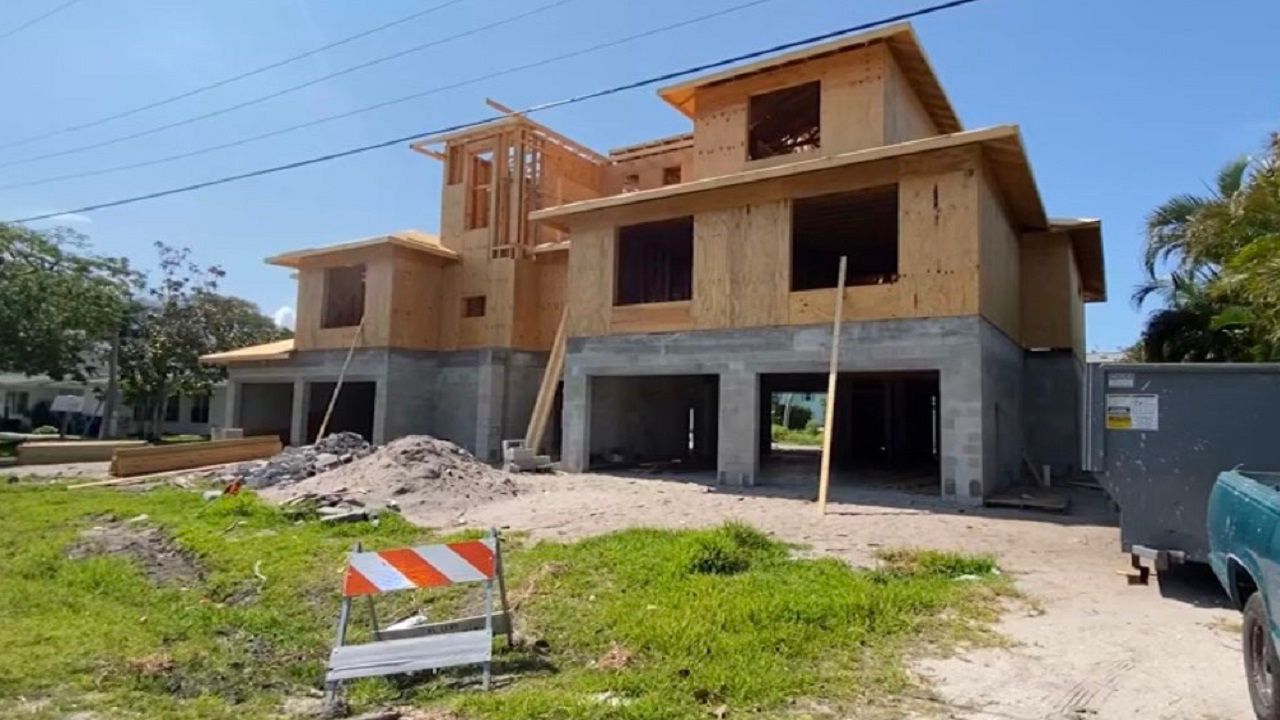Maine needs to nearly double its annual production of housing and embrace younger families coming to the state if it wants to solve its housing problems.
Those are some of the principal messages coming out of a new report from MaineHousing.
To say Maine’s housing production has fallen behind in recent years would be an understatement. Just to meet current demand, the report found, Maine would need to produce about 38,500 new homes (the study defined “homes” as any kind of dwelling, including single-family, duplex, multi-family or rental units).
“In a healthy housing market, typically about 5% of homes are vacant and available for use at any given time—allowing for housing choice flexibility and movement,” the report’s authors wrote. “Across Maine, the share of homes vacant and available has fallen to an average of 2.3% statewide.”
In addition, the report found that even if Maine were meeting current housing demands, the state would still have to produce another 37,900-45,800 new homes between now and 2030 to keep up with projected growth in population.
“That total is a daunting number,” said Greg Payne, senior housing advisor to Gov. Janet Mills. “I think what it requires us to do is take kind of years at a time, and do the work of understanding year-to-year how to get from where we are now to the number of housing units we’re going to need by 2030.”
Overall, the report found, Maine can make up the deficit and keep up with future demand if it adds 8,500 to 9,300 homes each year between now and 2030.
Calculating the exact number of homes the state is currently building is difficult, but based on building permits alone, the report found the state has a long way to go. Right now, there are about 4,800 new residential building permits issued per year.
The report estimated, depending on regional and local needs, that Maine would have to increase home production by at least 77%, and possibly as much as 94%, or nearly double, to address current and future demand.
CHANGES IN POPULATION, INCOMES PARTLY TO BLAME
In highly populated areas, such as York and Cumberland counties, the housing issues are more acute. The report estimates that 9,300 new housing units are needed in Cumberland, Hancock, Knox, Lincoln, Sagadahoc, Waldo and York counties, more than in other regions of the state.
Current demand, the report found, is driven in part by an influx of families moving to Maine from out of state.
In 2020 alone, the report found, out-of-state transplants created 1,200 new households in York County, and 2,000 new households in Cumberland County. That led to a skewing of average incomes, and therefore market rates for homes and rents.
“On average, the recent in-migrant households have somewhat higher incomes than existing households, with an average income of $88,000 compared to a median income of $63,200 for existing households,” the report’s authors wrote.
But Maine needs new workers to move to the Pine Tree State. The study, citing data from the U.S. Bureau of Labor Statistics, also showed that 73% of Mainers aged 55-64 were participating in the workforce as recently as 2017. That number has steadily dropped, however, to 63% in 2022.
Meanwhile, the data showed, the participation rate of people in younger age groups did not increase over the same five years.
“This decline in labor force participation for older adults, as well as Maine’s aging population more broadly, has contributed to a need for additional households to support Maine’s existing economy,” the report’s authors wrote.
Other factors, such as interest rates, are pushing home prices even higher.
Today, the report found, households need to have an annual combined income of $100,000 or more to afford the statewide median home price.
That will discourage people from moving to Maine to replenish the workforce, according to Christiana Whitcomb director of HR&A Advisors, a community development advisory firm, which collaborated to produce the report.
“Without homes that are affordable to what those jobs pay, Mainers will have a hard time taking those jobs, people will have a hard time coming from out of state to take those jobs and actually sustain the businesses that Maine already has now, let alone any future economic growth,” Whitcomb said.
TAKING ACTION LOCALLY
MaineHousing, the nonprofit that functions as the state housing authority, commissioned the report in the wake of the passage of LD 2003, a housing bill signed into law in April of 2022.
MaineHousing plans to release the report today at its 2023 Affordable Housing Conference in Portland.
The report also provides recommendations that focus in part on policy changes needed at the municipal level.
Whitcomb hopes local leaders will now use the data in the report to take charge of the issue in their communities.
“There’s so much variation in local needs, and communities are really in the best position to understand those needs and to take those broader numbers and think, ‘Where can we accommodate growth in our community?’” she said. “We really want communities to think about these numbers.”
While it cites issues discussed at length in the past, such as the state’s aging home stock, changes in population and a deficit of available homes, the report presents new data that paints a stark picture of the state’s housing situation and future needs.
Looking forward, the report suggested that setting local housing production goals will be key, given that needs will vary from town to town. Payne stressed that the report is simply outlining needs statewide and serves as a starting point for local policy discussions.
“The idea from here is to meet with municipalities, preferably as a region, understanding these labor markets and housing markets are regional, and talk about what the local obstacles are to creating more housing,” he said.









)